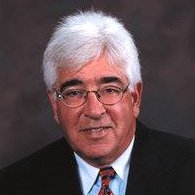Landing Pages
August 29, 2013
In an effort to promote specialized services such as invisible braces, same-day crowns, sedation, and non-surgical periodontal therapy (LANAP), some dentists are marketing themselves on the Internet by creating a separate domain with a single page site. These “exact match” domains convey a quick message with a clear call to action outside the normal information visible on the dentist’s primary website. These pages often have a simplified navigation, bullet pointed selling points, and a short paragraph about the practice and contact information plastered across the page. These domains have zero history with search engines from an organic standpoint. Thus they are outside the organic optimization efforts of the primary site. The only way to find them is with a pay per click campaign that will land you on this page. Hence the term “landing page”.
In recent years, Google has placed more emphasis on sites with high quality content and penalizes low-quality sites lacking in content. So creating landing pages within your primary site makes a lot more sense. These new pages can feature all the hallmarks of separate exact match domains, but they will benefit from the strength of the primary site. The landing pages I am describing should be optimized with the proper page title, meta description (including for photos), h1 tag, and content that is easy to scan yet provides the rich user experience of the practice’s primary branding. The page must of course have content that matches consumer searches and contain a call to action like “Click here to learn more”. Your webmaster can also create a different look–for example a different banner–that totally distinguishes this page from all others on the site while still retaining the colors and feel and character of your website.
Those of you who follow my blog know that I’ve always been a fan of creating websites that position well on the local Google business map by utilizing ethical and innovative SEO techniques. Recently, I am starting to feel that you need – and will benefit from – additional firepower. Since Google constantly changes its algorithms, you cannot totally control how Google matches consumer searches to content on your website. The only real way to control consumer search and which pages a consumer is brought to is by placing Google Adwords.
With Adwords, you choose the terms you want to be shown for, and you choose where you bring the consumer. For instance, if you want to have your ad show when someone within a certain geographic location searches for clear braces, and you want them to land on your Invisalign or Six Month Smiles page, you can control that with an Adwords campaign.
While it is possible for you to do your own Adwords campaign, I advocate that you hire someone to do it for you. A specialist in this area can insure that the correct keywords are picked, that people are being routed to the correct landing pages, that possibly certain keywords are excluded, that you aren’t wasting your ad dollars on keywords that won’t ultimately get people to call, that you aren’t wasting your ad budget outside of the geographical reach, and that you are getting a good return on your investment. Additionally, a specialist is acutely familiar with reports and how to interpret them to get you the best results.
If your website is outdated – or worse if you don’t even have a website – then your only option is the exact match domain. But if you are proud of your website, and it is reflective of the personality and character of your practice, then using landing pages within your site seems like such the better way to go. As always, I remain interested in your opinion.
Seven Words That Mean a Lot
August 14, 2013
Over the last few months, I have been discussing strategies for solidifying and reinforcing the relationships you have created with your existing patients. If you consistently meet or exceed their expectations, in theory they should never leave. I suggest that you go back and review this information with your entire team. And today let’s put the finishing touches on what I think are the two absolutes for continuing to distinguish your practice in your community.
“Thank you” and “How may I help you” are magical words that will disarm even the most critical and demanding individual. “How may I help you” should be the start of every conversation and patient interaction. And it must be genuine and sincere and heartfelt. Providing a solution has to be a given –whether for resolving a problem with a dental insurance claim, changing a scheduled appointment, accommodating an emergency, making a referral to another provider, or calling in a prescription to the local pharmacy.
Eliminate road blocks, eliminate ego, and recognize that patients want solutions and expect you to provide the answers quickly. Be certain to always follow through. Never overpromise and under deliver. I’ve said many times before, in this day and age when poor customer service is rampant, it is really not that hard to be good when everyone else is so bad.
Saying “thank you” is the finish of every conversation. Even better when you include the name of the patient along with the thank you. Try to look for ways to say thank you: for posting a wonderful Google review, or for referring a new patient to the practice, or simply for your understanding of any perceived failure on your part to deliver a quality experience.
The cumulative effect of these efforts will be genuine, unsolicited, word of mouth recommendations that should continue to drive new patient flow. And of course they will reinforce the belief of your existing patients that there is no finer dental office on the planet!

